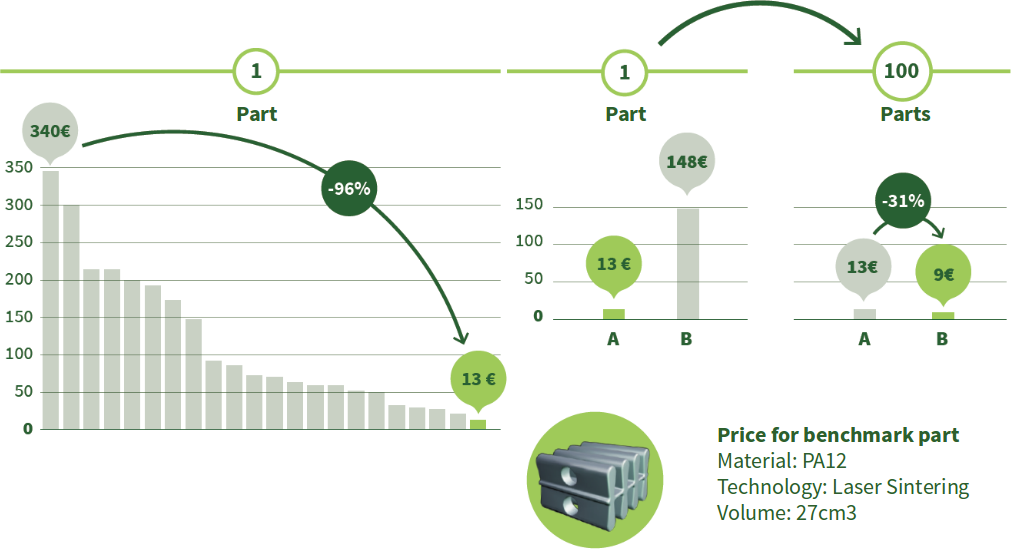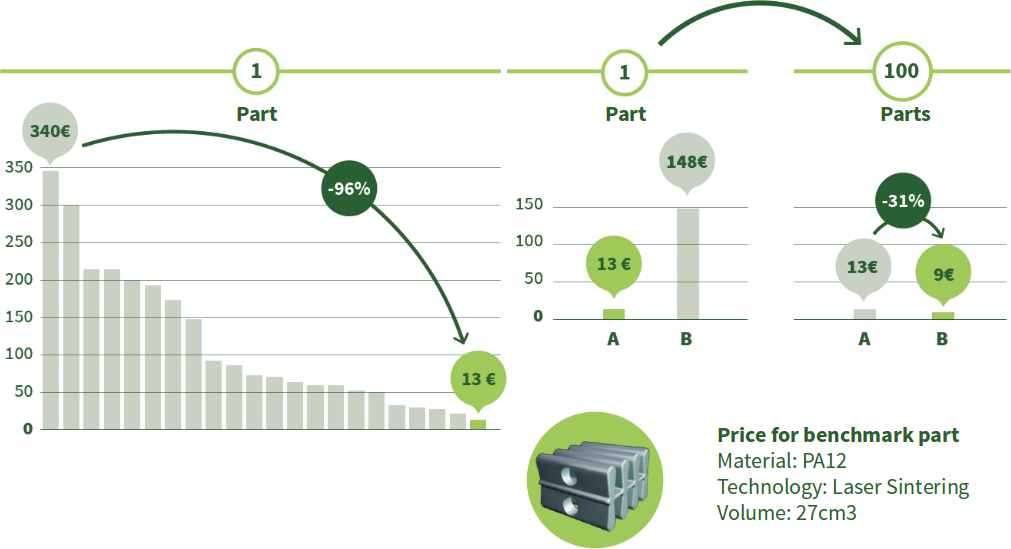A lot of innovation, in the 3D printing industry, comes from the bottom; that is: final users and those who now have professional prototyping machines at accessible costs. An even faster rate of innovation is taking place at a professional and industrial level. To make all of these rapidly evolving technologies more accessible to professionals, Additively has created an international network of rapid prototypers and additive manufacturers. A given company or one department in a given company just need to upload a 3D model to the Additively website in order for the Additively system to help optimize the costs and efficiency of getting the model 3D printed.
“The bottom line is that additive manufacturing is so new and diverse that, many times, especially in the larger companies, the departments do not communicate easily and each follows a different avenue to get their 3D printed parts and prototypes,” says Fabian Matthias Baldinger, co-founder of Additively. “Through our service,” he explains, “they will be able to have a single point of contact for all of their company 3D printing needs and we make sure they get the best suited service for each specific component.”
To do this, Additively has created a directory which includes over 300 3D printing service providers from all over Europe, Asia and North America. Mathias received his PhD from ETH, Zurich’s world renowned technological University, studying business and economics and how 3D printing can specifically help to address supply chain issues.
In one of the new business models Additively is introducing, 3DP service providers will be featured free of charge in the database and all of their information will be accessible to users browsing the website. And those who register for a premium subscription plan will be able to receive new customer leads.
Matthias and his team initially uploaded a number of prototyping companies, then left the database open, with a form that each new company can easily fill out to be featured on the system – similar to the way that LinkedIn functions, but for 3D printing service providers. Users can explore the database, selecting the technology, materials and country desired or they can simply upload their parts and let the Additively team find the best provider for them. “We tried to make it as hurdle-free as possible for companies to join. Our main goal is to select the most suitable service providers for each job and we earn commissions while helping companies reduce their costs.”
The second business model Additively uses is relative to the service offered to the the final adopters of 3D printed parts. “Whenever they need a service, they will be able to simply upload their file and have a single interaction,” Matthias explains, adding that Additively can work with each client to help them create a 3D printing community within the company. “We implemented this system at ETH in order for the various departments to optimize their resources and also offer 3D printing services to researchers and students within the university.”
Due to the relative novelty of 3D printing as a manufacturing technology, there are still many areas for improvement. Companies need to use different technologies and services for each type of part they are looking for and the prices can vary enormously. “If a company needs 100 parts, but they can have them delivered over a period of two months it will be considerably less expensive for them,” Mathias points out.
Additively is also a tool to assess the incremental use of 3D printing and Matthias says it has been considerable. “Companies are starting to really implement it into their manufacturing capabilities and this is helping them discover the new possibilities which, in turn, call for an ever larger adoption of 3D printing.” Today, Additively’s service is addressed mainly to German-speaking countries and primarily for the areas of medical technology, engineering and manufacturing; however, Additively’s reach is widening to other countries as well.
“The service providers are generally very fast and we have developed the ideal workflow for them to give quick quotations, though a standard template. This is also a benefit to the customers, who can easily compare different services and quotations and chose the one that is best for them,” Matthias concludes. Just like the industry it wants to cater to, Additively is adding new layers to its product offer, growing additively: is there any other way to grow?






